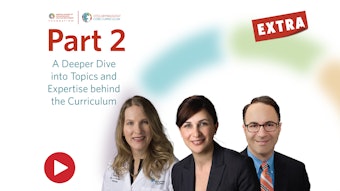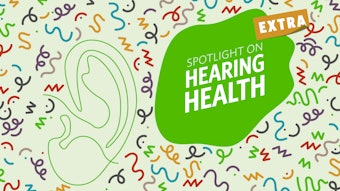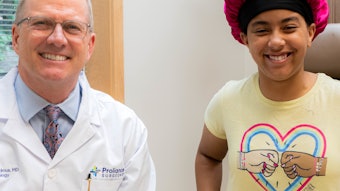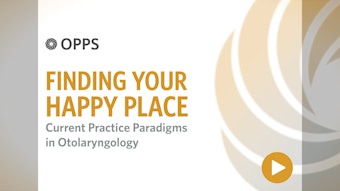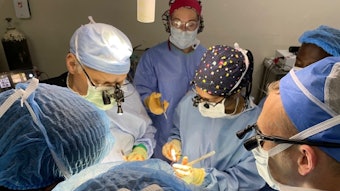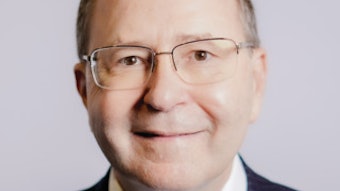Uvulopalatopharyngoplasty in the Age of Neuromodulation
Improved surgical techniques and postoperative regimens mean uvulopalatopharyngoplasty will continue to be an essential part of the ENT toolkit for obstructive sleep apnea.
Abhay V. Sharma, MD, and M. Boyd Gillespie, MD
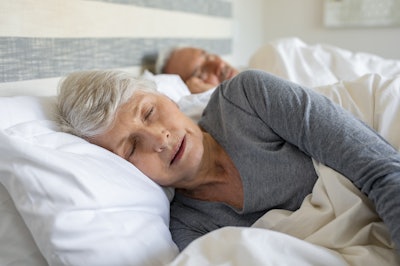
The field of sleep surgery has come a long way from the days of excisional uvulopalatopharyngoplasty (UPPP) as the mainstay for CPAP-intolerant patients. As the caretakers of the upper airway, most otolaryngologists understand the limitations of pharyngeal and hypopharyngeal surgery for the complex disorder of obstructive sleep apnea (OSA). A large body of evidence in the 1990s demonstrated the limited success rates of the surgery, and so we as a specialty began improving selection techniques. As a result, it is well understood that patients with large tonsils and favorable tongue positions tend to do well. These criteria are referred to as the Friedman staging system.1
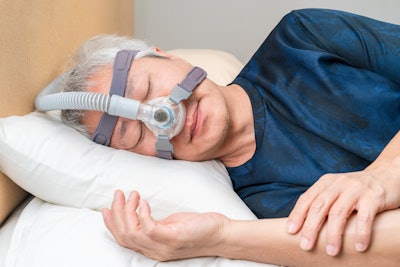
One of the key points in this discussion is the extent to which patients and surgeons are willing to go to treat OSA. This is an increasingly important question with the advent of neuromodulation as a treatment option. Frequently, we are treating older individuals, and more extensive surgery may not be an option for them. UPPP techniques have become more and more conservative, leading to fewer complications and similar, if not better, success rates. The recent sleep apnea multilevel surgery (SAMS) trial highlights the importance of utilizing the full breadth of options in treating OSA.5 Using a simple, efficient, and standardized approach of UPPP with tongue volume reduction via coblation, the authors were able to show significant improvements compared with the control group, which received ongoing medical treatment.5 Though pain control and dysphagia continue to be postoperative issues for patients, we are improving our ability to treat these symptoms with better, more extensive post-op regimens that include medications to decrease the need for narcotics.
In addition, it is important to realize the difficulty of comparing outcomes between UPPP and neuromodulation. Thankfully, we are steadily moving away from the deceiving outcome of titration AHI. This measure was frequently used to report outcomes with hypoglossal nerve stimulation and often overestimates the effectiveness of the device. In the future, studies directly comparing full night sleep study outcomes will be important to determine the differences in success rate. Likely, these success rates are more similar than we currently make them out to be.
Finally, the role of medications in treating OSA will change how we counsel patients. Combination approaches using medications targeting the popular concept of endotypes, along with less invasive surgical options, could completely change the paradigm of OSA treatment. The possibility of surgery followed by medication to effectively resolve OSA may be within our reach soon. GLP-1 agonists such as semaglutide could become mainstays of initial treatment.
We are increasingly understanding the limits of treating patients with CPAP. Compliance is a problem, and this has not changed despite multiple attempts to improve patient usage. Though hypoglossal nerve stimulation can be an extremely effective technique, it requires significant postoperative follow-up, battery changes, and all the pitfalls of any permanent implant. Younger patients receiving this therapy will inevitably be at risk for greater complications in the future as they keep the device for decades. UPPP techniques continue to evolve and have been shown to improve long term health outcomes, despite less impressive effects on AHI. As a result, UPPP will continue to be an essential tool in the otolaryngologist’s toolkit for OSA.
References
- Friedman, M., H. Ibrahim, and L. Bass, Clinical staging for sleep-disordered breathing. Otolaryngol Head Neck Surg, 2002. 127(1): 13-21.
- Weaver, E.M., C. Maynard, and B. Yueh, Survival of veterans with sleep apnea: continuous positive airway pressure versus surgery. Otolaryngol Head Neck Surg, 2004. 130(6): 659-65.
- Lee, H.M., H.Y. Kim, J.D. Suh, et al., Uvulopalatopharyngoplasty reduces the incidence of cardiovascular complications caused by obstructive sleep apnea: results from the national insurance service survey 2007-2014. Sleep Med, 2018. 45: 11-16.
- Yang, K.L., P.W. Lin, C.T. Chang, et al., OSA Treatment on Cardio- and Cerebrovascular Comorbidities: A Long-term Nationwide Cohort Study. Otolaryngol Head Neck Surg, 2022. 167(3): 600-606.
- MacKay, S., A.S. Carney, P.G. Catcheside, et al., Effect of Multilevel Upper Airway Surgery vs Medical Management on the Apnea-Hypopnea Index and Patient-Reported Daytime Sleepiness Among Patients With Moderate or Severe Obstructive Sleep Apnea: The SAMS Randomized Clinical Trial. JAMA, 2020. 324(12): 1168-1179.
